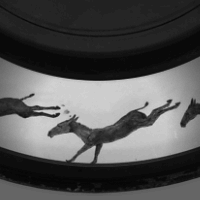Saint-Charles shaft

Epanadiplosis (from Ancient Greek ἐπαναδίπλωσις/epanadíplôsis, from ἐπί/epí, “on”, ἀνά/aná, “again”, and διπλόος/diplóos, “double”, i.e. “doubling in succession ”1) is a figure of speech in which the same word is used at the end of a clause as at the beginning of a preceding clause. The opposite figure is anadiplosis. It allows for melodic and rhythmic interplay to suggest emphasis or humor. Epanadiplosis can also be used to emphasize a word, a group of words or an idea.
Epanadiplosis is also a narrative figure used in many literary genres, in which case it's called “narrative epanadiplosis”. It's the repetition of an initial scene or motif (in the incipit) at the end (or clausule) of the plot. It suggests that the narrative is closed in on itself.
Nature et limites de la figure
Epanadiplosis is a figure of repetition affecting syntactic position (the order of words in the sentence).[1] For César Chesneau Dumarsais, the figure appears “when, of two correlative propositions, one begins and the other ends with the same word”,[2] or when, according to Henri Suhamy4, only two propositions are involved.
He cites Tacitus5 as an example:
“Principes pro victoria pugnant, comites pro principe (Leaders fight for victory, companions for their leader)”.
More specifically, epanadiplosis is the repetition at the end of a sentence of a word or even a locution located at the beginning of a proposition. The figure therefore concerns the phrasal level, unlike narrative epanadiplosis, which concerns an entire text. It constitutes a linguistic mechanism that is the opposite of anadiplosis, and can be summarized as follows, according to Patrick Bacry6 :
A _______ / _______ A
As in these verses by François de Malherbe7 :
[...] But she was of the world, where the most beautiful things
have the worst fate,
And rose she lived what roses live
In the space of a morning. [...]
For Jean-Jacques Robrieux, epanadiplosis is a figure close to chiasmus8 , as in this line by Victor Hugo, in which the indefinite pronoun “rien” is repeated symmetrically at the beginning and end of the proposition:
“Rien ne me verra plus, je ne verrai plus rien9 ”.
For Nicole Ricalens-Pourchot, epanadiplosis is signaled by the use of “two juxtaposed propositions, separated by a comma or semicolon ‘10 ; it is, therefore, as Georges Molinié notes, a ’microstructural figure”, as it only affects the limits of the sentence, and therefore only plays on both elocution and construction11. It is, moreover, a very rare figure1.
Limits of the figure
Combination with other figures
Epanadiplosis is sometimes confused with epanalepsis, in which the same word or group of words is repeated within the same sentence12 :
“Le temps s'en va, le temps s'en va, ma Dame”. - Pierre de Ronsard, Sonnet à Marie13
However, these two figures, as well as that of anadiplosis, are often used in conjunction12 , as in this excerpt from Eugène Ionesco's Rhinocéros (act i):
“Yes, I have strength, I have strength for several reasons. First I have strength because I have strength, then I have strength because I have moral strength. I also have strength because I'm not an alcoholic.”
Epanadiplosis is also often used in combination with symplosis, as in:
“You in the corner are sure. You're certain, that's for sure.14”
The whole allows for melodic and stylistic effects, since in the symphony the words or groups of words beginning a phrase and those ending it are repeated at the beginning and end of the following phrase. Epanadiplosis is combined, so that there is “an interweaving of repetitions ”15.,
00,
Anaplodiplosis

Narrative epanadiplosis, or “anaplodiplosis” (anadiplosis in Latin), from the Greek ἀνάπλωσις (“explanation”) and διπλόη (“anything doubled, or divided in two”) is a figure of speech that consists in completing a work, usually a novel, as one has begun it. It consists in repeating, at the very end of a work, the initial motif, event or configuration described in the incipit. Anaplodiplosis is a way of “coming full circle”. At the end of the novel (or film), the reader or viewer encounters an identical or similar situation to that of the incipit, giving the work a certain depth1. This cyclical conclusion is frequently found in short stories.
See also
References
- ^ Badir, Sémir; Klinkenberg, Jean-Marie (2008). Figures de la figure: sémiotique et rhétorique générale (in French). Presses Univ. Limoges. ISBN 978-2-84287-458-2.
- ^ Dumarsais (1797). Oeuvres (in French). Pougin.
